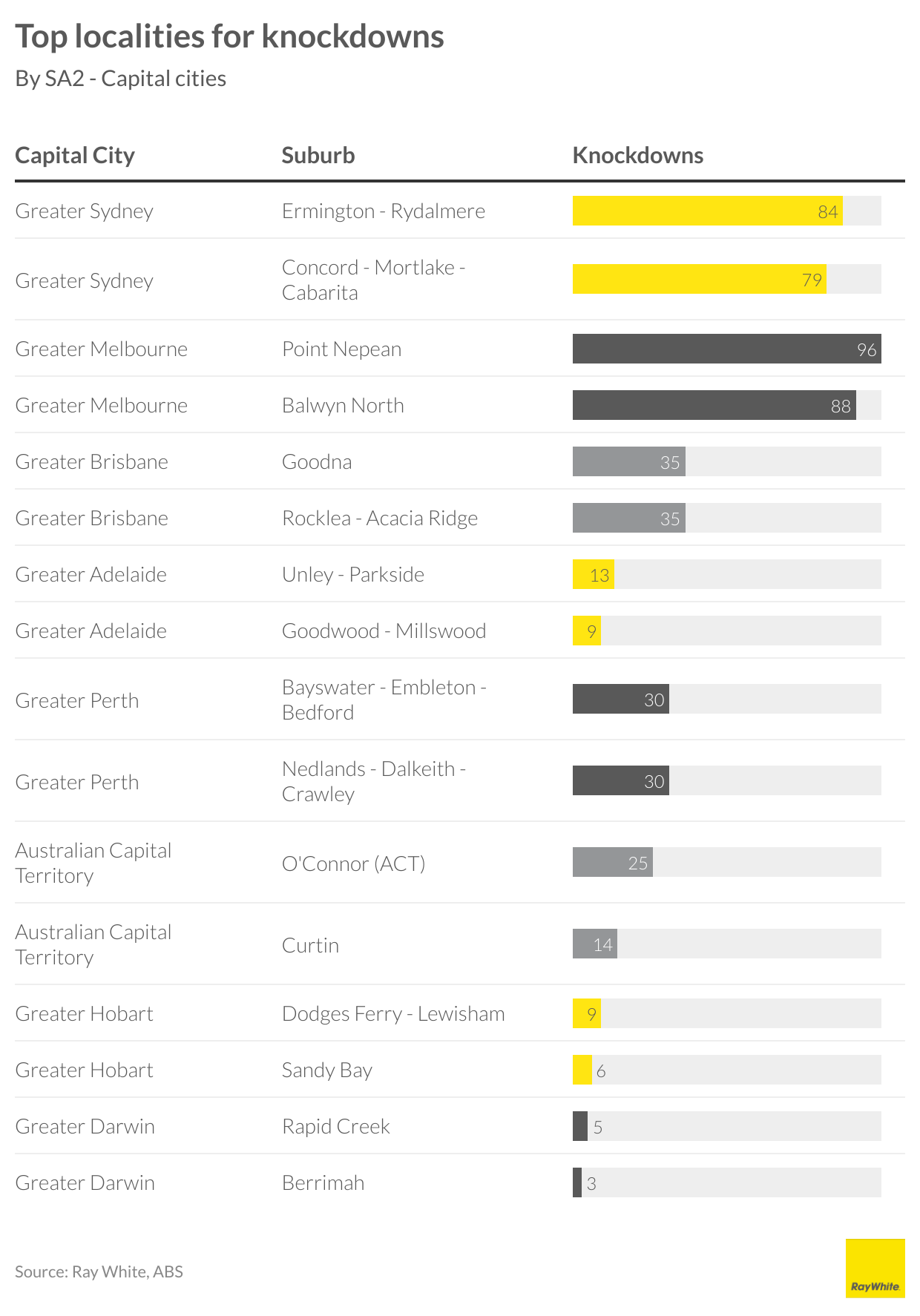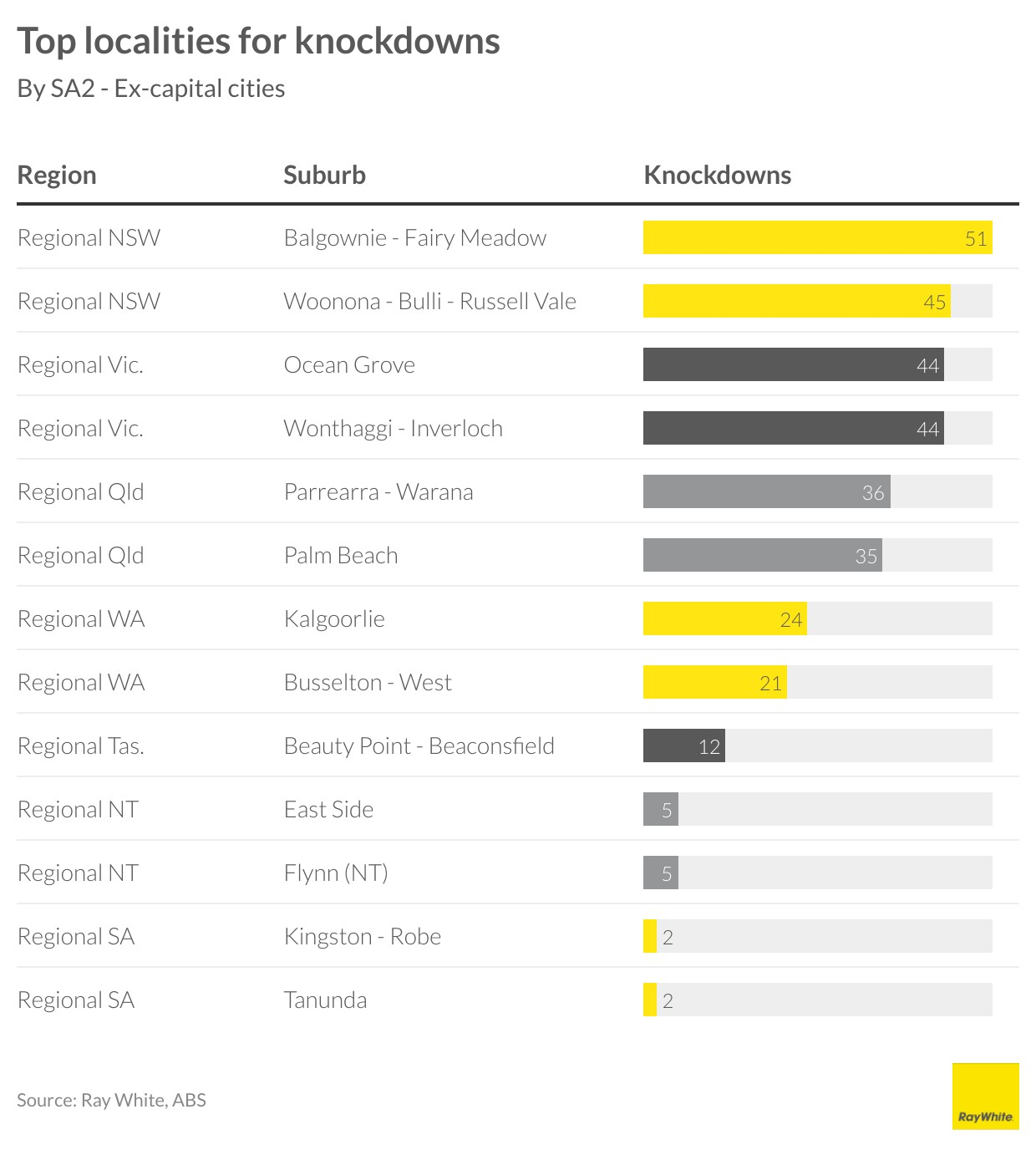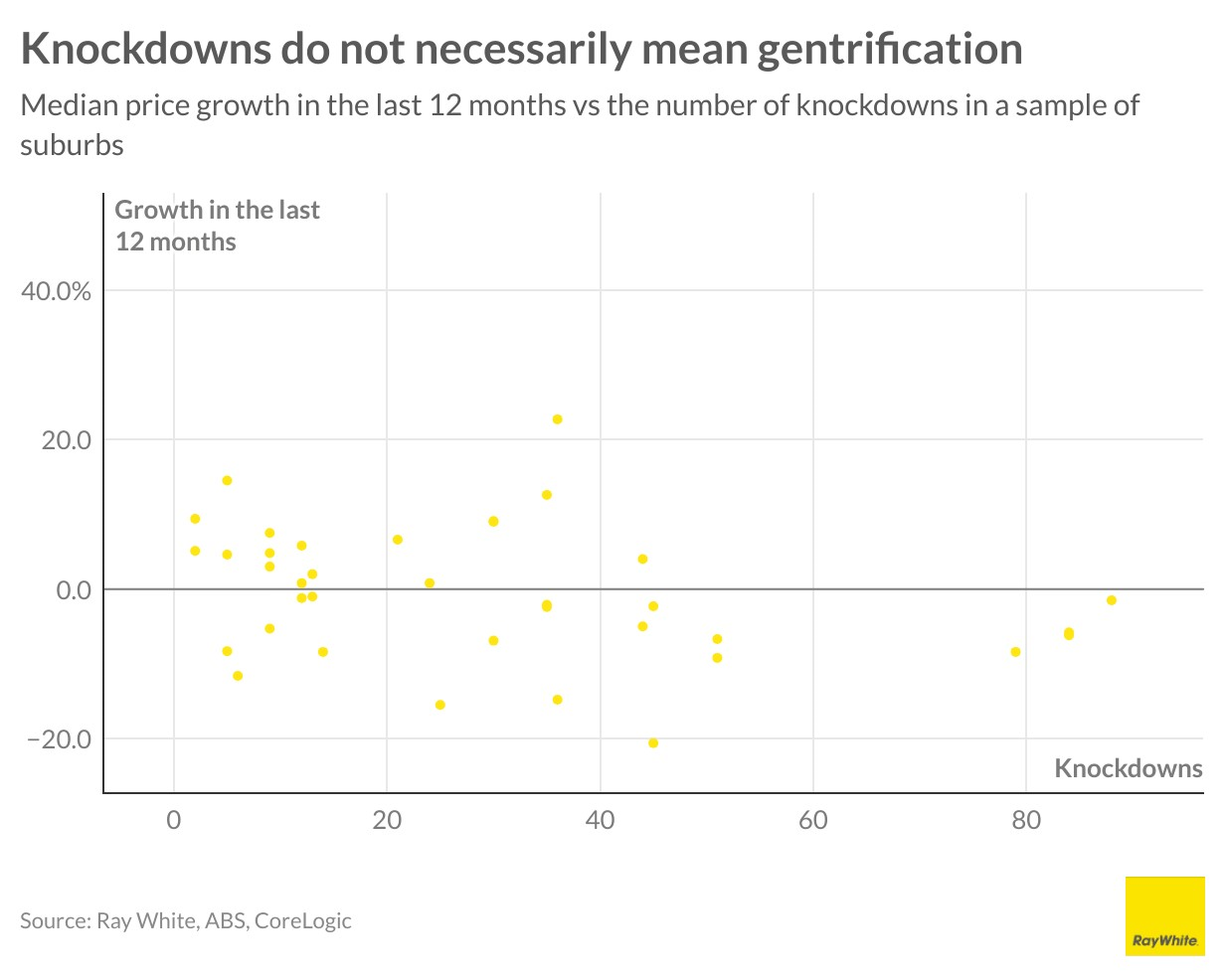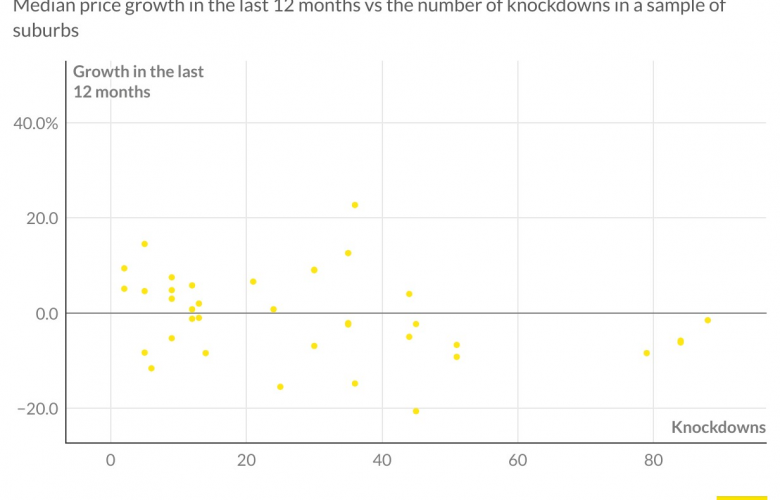Where are we seeing the most knockdowns? - Ray White
Contact
Where are we seeing the most knockdowns? - Ray White
According to William Clark Ray White Group Data Analyst, some of the suburbs with the most knockdowns can be inferred to be some of the fastest-gentrifying. So where are these fast-developing suburbs?
If you’re anything like me, even being on the same street as a knockdown can mean you’re now obliged to monitor the progress of the rebuild, and alert your partner as to how quickly the new facade has gone up. It’s a big event, for neighbours, employed builders, and especially the future residents, whether they know it or not. It is a sign of vitality and growth in the immediate area, the old giving way to the new (and hopefully improved).
Sometimes areas with many knockdowns are hit with the gentrification label, and that can be true. Some of the suburbs with the most knockdowns can be inferred to be some of the fastest-gentrifying.
We can examine this by looking at the relationship between knockdowns and median price growth. So where are these fast-developing suburbs?

In the above chart, I have taken the top three suburbs for knockdowns per capital city. In many of these suburbs, knockdowns feature heavily alongside frequent development on vacant land, leading to higher urbanisation. If these developments are low quality, we will likely see median house prices decrease, as low quality offerings make up the majority of transactions. The reverse is true if these new developments are high quality.

Similarly, we see regional New South Wales and Victoria have higher levels of demolition. Knockdowns represent a strong step forward in the number of dwellings available, as house lots getting rezoned to apartments and higher density residential often motivates a lot of development. It is interesting to see large levels of redevelopment occurring in the regions, when normally you’d expect to see high-development suburb restricted to outer-city suburbs.

And the final question - do large numbers of knockdowns and redevelopments in my neighbourhood mean my suburb is gentrifying, and seeing a new community moving in? Not necessarily.
We see in the plot above that large numbers of knockdowns in suburbs does not mean the suburb itself is becoming unaffordable or changing in any meaningful way. More often than not, gentrification is slower and more sustainable than a sudden wave of knockdowns, so whether you are for it or against it, you will see it happening in a time frame you can respond to.








